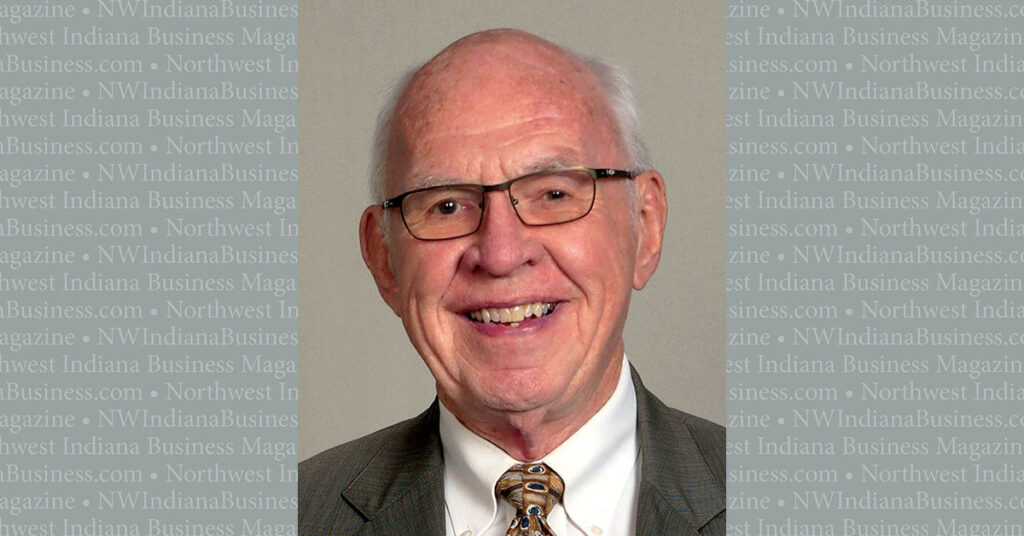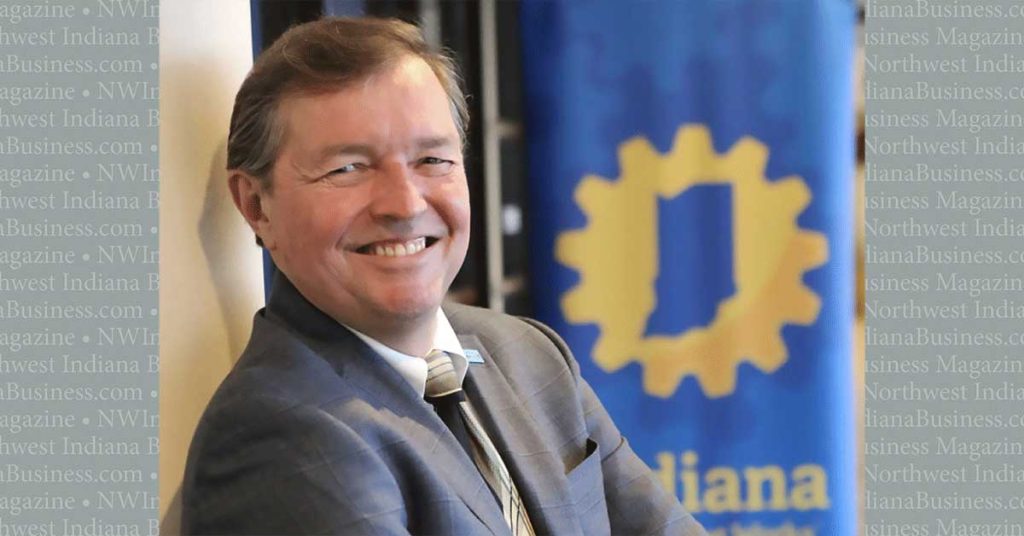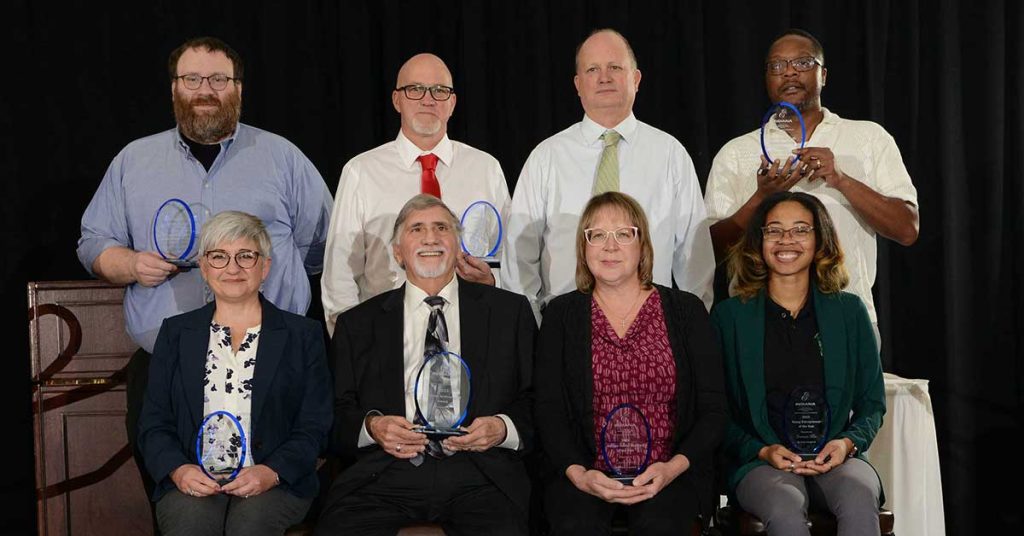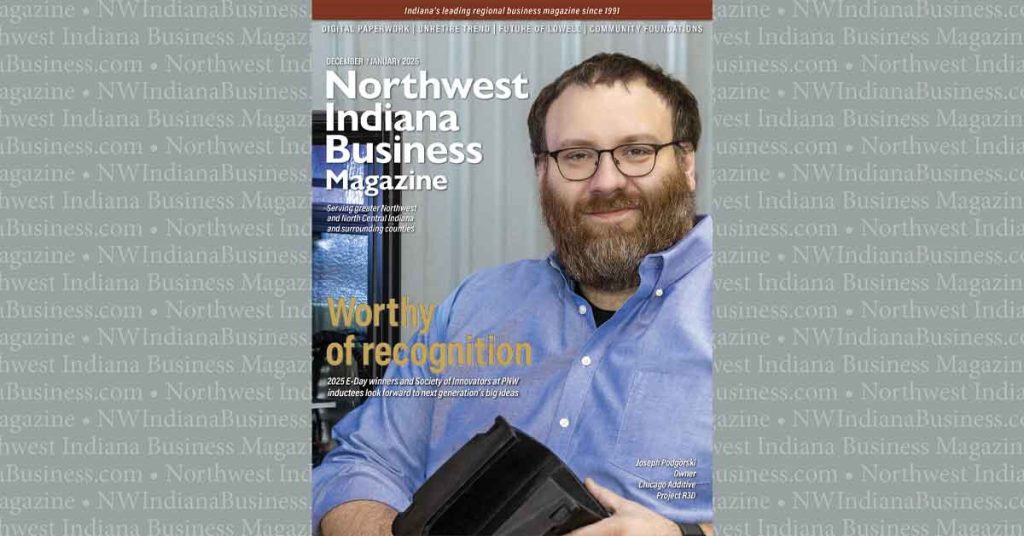
Data centers, fiber pathways fuel growth, power needs in Region
 Long known for its deep steel industrial roots, the Region’s landscape is being reshaped by a new wave of economic development.
Long known for its deep steel industrial roots, the Region’s landscape is being reshaped by a new wave of economic development.
Northwest Indiana has evolved into an increasingly attractive destination for tech businesses and startups. With its proximity to Chicago, and a growing ecosystem of innovative companies, the Region is a burgeoning Midwest tech hub.
Along with the investment, growth and jobs tech companies create in their wake, they also pose challenges because of the power and water resources they require.
Businesses, utility providers, legislators, economic development organizations, universities and community stakeholders are gearing up to meet those needs for today, tomorrow and in the years to come.
Steve Baker, Indiana Michigan Power president and chief operating officer, said the energy industry is in “a period of unprecedented change.”
“We’re going to experience more growth in terms of load and technology than I’ve seen over my 34 years in this company,” said Baker who overseas electric service for 600,000 customers.
Indiana’s boom in data centers will pave the way for that change.
“With the data centers coming into this Region, Northwest Indiana is going to be a major player in the Region’s significant economic expansion opportunities,” he said.
Just last year:
- Amazon Web Services broke ground on a $11 billion data center in St. Joseph County.
- Digital Crossroad launched a 1.7 million-square-foot data center in Hammond, repurposing one of the first power plants in the Midwest designed by Thomas Edison.
- Quantum Corridor is building a lightning-fast fiberoptic communications network snaking 250 miles across Indiana.
- Microsoft is investing $1 billion to establish a data center in La Porte.
- The town of Merrillville approved three proposals for data centers — even creating a “data center citizen advisory committee.”
The Region also is playing a role in the Bloch Quantum Tech Hub, a coalition of industry, academic, government and nonprofit organizations led by the Chicago Quantum Exchange. It is one of 31 federally designated tech hubs.
The goal is to create an open and proactive dialogue between the company interested in locating here and the utility companies that would be servicing it. This includes understanding where the project would be located, the timetable … and what their overall need is.”
In 2024, the Hoosier state ranked eighth in emerging markets for data center development, according to the Global Data Center Market Comparison.
“The Northwest Indiana Forum has been purposefully targeting high-tech companies to continue to evolve the makeup of our regional economy,” said Heather Ennis, Northwest Indiana Forum president and CEO. “All of this activity in addition to the state’s favorable tax and regulatory climate, has helped to set the table for tech investment across the Region.”
Location, location, location
 Tom Dakich, Quantum Corridor CEO and Digital Crossroad managing member, likens Northwest Indiana to the middle of a Venn diagram.
Tom Dakich, Quantum Corridor CEO and Digital Crossroad managing member, likens Northwest Indiana to the middle of a Venn diagram.

Quantum Corridor CEO and
Digital Crossroad managing member
“It’s right in the pocket,” Dakich said. “There’s an ecosystem in Northwest Indiana that can really activate.”
Northwest Indiana is like a ripe fruit for tech companies. One big draw is affordability. Compared to many areas of the country, operating costs are lower. The state’s business-friendly policies, tax incentives and grants sweeten the deal for companies looking to relocate or expand.
“So many people are really working hard to create an environment where businesses want to come to Indiana,” Dakich said. “We firmly believe that the best Northwest Indiana is the one where everyone is involved.”
The Region’s location is key, with its proximity to Chicago, the nation’s third largest economy. The South Shore Line Double Track project has cut commute times, providing tech professionals and businesses with easy access to a major metropolitan area. Employers also have a skilled workforce at their fingertips, thanks to regional universities and Ivy Tech Community College that are producing graduates in technology-related fields.

Purdue University Northwest
chief engagement officer
Companies are attracted to the Region’s water, utility infrastructure and swaths of undeveloped or underdeveloped land. The Region is home to 20% of the world’s fresh surface water via Lake Michigan. The lake provides a stable water supply, unlike many areas facing water scarcity. Northwest Indiana also hosts a mix of energy sources, including traditional fossil fuels like natural gas and coal and an increasing share of renewable energy.
“Industries like manufacturing, logistics and technology rely on stable power grids, robust transportation networks and scalable infrastructure,” said Matthew Wells, Purdue University Northwest chief engagement officer. “As the Bloch Quantum Tech Hub gains momentum, there will be increasing demand for high-performance computing infrastructure, quantum networking capabilities and skilled talent in quantum engineering, AI and cybersecurity.”
The increased demand for energy and water presents economic and workforce development opportunities, according to Wells.
Indiana ranks ninth in the nation for infrastructure, according to CNBC’s America’s Top States for Business study. The study measures the reliability of roads, bridges, airports, power and internet.

Northwest Indiana Forum
president and CEO
“Amazon Web Services carefully chooses our data center locations based on electric grid reliability and its renewable power generation, to mitigate environmental risk (including extreme weather and seismic activity), access to robust networks and the overall economics, which includes the cost of power, cost of land and other factors,” an AWS spokesperson said.
According to Ennis, high tech investments need significant resources.
“Ten years ago, it was uncommon to see a project that needed 100 megawatts of power — now it is commonplace to see projects that need 500 MW or even 1 to 2 gigawatts. These projects also need strong water resources for cooling,” Ennis said. “Many companies are getting better about recirculating and recycling their cooling water, so the demand is not as staggering as it used to be.”
Supply and demand
 Northwest Indiana is investing in grid modernization, sustainable energy projects and infrastructure to support high-energy users.
Northwest Indiana is investing in grid modernization, sustainable energy projects and infrastructure to support high-energy users.
“NIPSCO is at the center of everything. They are leading the state with plans to deliver power,” Dakich said. “NIPSCO is really attacking questions about power. They are working diligently to make sure commerce is served.”
Merrillville Town Council President Rick Bella said its advisory committee is giving “full support” to three proposals from developers and will next seek support from NIPSCO.
“As interest in data center development grows in Merrillville, securing adequate power supply has emerged as a critical factor,” Bella said.
A letter of support to NIPSCO outlined land options, locations and zoning requirements for all three proposals.
He also said the “high energy demands of these facilities” could potentially lead to “competition among developers.”
“Notably, all proposed sites are near the necessary KV power lines — an infrastructure separate from the power supply serving residential and commercial customers, thereby preventing any impact on existing energy distribution,” Bella said.
According to Indiana Michigan Power’s Baker, there are two components to serving larger electrical loads and projects: improving the basic grid or wires infrastructure and generating additional electrical energy and capacity.
“Serving these enormous electrical loads will require new power generation resources and transmission upgrades, which will add jobs and grow local tax bases,” Baker said. “This is an exciting time to work in this field.”
According to Baker, Indiana Michigan Power’s parent company, American Electric Power, is making investments to expand the grid’s capabilities to serve large-load projects.
Communication between businesses and utility providers is critical to ensure energy supply can meet demand. According to Danielle McGrath, Indiana Energy Association president, Indiana utilities are taking a proactive approach by working with state and local economic development partners and businesses interested in locating in the Region.
“The goal is to create an open and proactive dialogue between the company interested in locating here and the utility companies that would be servicing it,” McGrath said. “This includes understanding where the project would be located, the timetable on which they are operating and what their overall need is.”
Amazon Web Services is one of many examples. Drawn to Northwest Indiana, they are working with community representatives.
“Where we require specific infrastructure to meet our needs, such as new substations, we work to make sure that we’re covering those costs and that they aren’t being passed on to other ratepayers,” an AWS spokesperson said.
Indiana Michigan Power reviews its generation capacity and energy as part of its Integrated Resource Plan, a 20-year forward forecast that is updated every three years.
“Due to the unprecedented load growth requests, Indiana Michigan Power has received from data centers and other customers, the load forecast used in our IRP has drastically changed,” Baker said.
Indiana Michigan Power has developed a tariff that establishes terms and credit requirements for large-load customers to facilitate their needs while also protecting existing customers.
Companies are also turning to solar, wind and nuclear options to meet demand.
We’re going to experience more growth in terms of load and technology than I’ve seen over my 34 years in this company. … With the data centers coming into this Region, Northwest Indiana is going to be a major player in the Region’s significant economic expansion opportunities.”
“Indiana has prioritized an all-of-the-above approach to energy,” McGrath said. “When utilities determine the best mix of generation resources, they take reliability, affordability, stability, resiliency and sustainability into account, in addition to robust economic modeling.”
Amazon Web Services aims to have net-zero carbon emissions across its operations by 2040. It’s deploying new sources of carbon-free energy, including nuclear, wind, solar and battery storage projects. Amazon Web Services plans to be water positive by returning more clean water to communities and the environment than it uses in its direct operations by 2030.
“In our Indiana data centers, we are using water-efficient technology, which uses the outside air to directly cool servers without the use of water for more than 90% of the year,” an Amazon spokesperson said. “Our commitment to Indiana includes enabling five solar and wind projects, with a combined capacity of more than 600 MWs of renewable energy, enough to power approximately 144,000 U.S. homes.”
In the quest for additional power generation, Indiana Michigan Power has solar farms across Indiana and Michigan, including one in St. Joseph County, its largest solar farm yet. The company is also pursuing additional nuclear power.
“The future of energy is bright, and the Region is well positioned given ongoing investments being made in infrastructure, economic development and amenities that will improve the quality of life,” McGrath said.
Legislative backing
 Several bills in the state’s 2025 legislative session have focused on economic development, regulatory efficiency and grid reliability to help Indiana utilities provide dependable energy service.
Several bills in the state’s 2025 legislative session have focused on economic development, regulatory efficiency and grid reliability to help Indiana utilities provide dependable energy service.
“I believe they recognize the opportunities that large-load customers bring to our state,” Baker said. “There is also a recognition that the large-load projects also pose some unique challenges, as they are transforming our industry at an unprecedented pace.”
As of Feb. 19, the Indiana House of Representatives advanced State Rep. Ed Soliday’s House Bill 1007 to a first reading by the committee of utilities. Both houses of the state legislature are scheduled to adjourn April 29.
The legislation would reduce barriers to entry for companies looking to use small modular nuclear reactors to generate energy.
“Indiana needs to make sure we are gradually enhancing our energy grid,” Soliday said in a February press release. “With small modular nuclear reactors, our state can continue to grow while reinforcing the five pillars of energy policy, which are reliability, affordability, resiliency, stability and environmental sustainability.”
SMRs are compact sources of energy. They can be used alone or with other similar sources to create energy for a single location or numerous locations. Companies that need large amounts of energy may be able to utilize SMRs to supplement generation without burdening the grid.
“Indiana understands the role nuclear generation will play in future economic development competitiveness,” Baker said. “Nuclear generation as an energy source is an important part of the state’s energy future.”
Educational support
 Research and workforce programming at schools across Northwest Indiana are
helping to meet the Region’s changing needs.
Research and workforce programming at schools across Northwest Indiana are
helping to meet the Region’s changing needs.
Purdue Northwest’s Center for Innovation through Visualization and Simulation and its Energy Efficiency and Reliability Center are playing a role. Their work focuses on optimizing energy efficiency and reliability for industrial and power companies, including those in steel and energy production.
“These efforts are critical in ensuring that power grids remain resilient and efficient as demand from data centers and other industries increases,” said Chenn Zhou, the NIPSCO Distinguished Professor of Engineering Simulation at PNW. Zhou also serves as director of CIVS.
As quantum technologies evolve, Northwest Indiana’s participation in the Bloch Quantum Tech Hub positions the Region as an emerging player in next generation computing and secure data transmission.”
The center collaborates with energy providers and industrial partners to improve energy efficiency, reduce costs and enhance workforce training. It uses advanced simulation, visualization, AI tools and 3D digital twins.
“CIVS’s expertise in energy efficiency for heavy industries like steel and power generation enhances the Region’s ability to manage growing energy demands,” Zhou said.
According to Zhou, the center’s work with power companies and steel manufacturers has resulted in annual savings of over $40 million.
“These centers also ensure that Northwest Indiana has effective pathways for workforce development, ensuring access to the critical pool of talent necessary to support these technologies,” Zhou said. “As quantum technologies evolve, Northwest Indiana’s participation in the Bloch Quantum Tech Hub positions the Region as an emerging player in next generation computing and secure data transmission.”
With continued investment and innovation, Northwest Indiana is on track to become a major player in the Midwest’s tech economy. As companies recognize the advantages of establishing a presence in the Region, the momentum will only grow. Whether through large-scale data centers, startup incubators or cutting-edge research initiatives, the Region is proving that it has the resources and vision to be a thriving tech hub.
“Northwest Indiana is the ideal place in the country for the development of this technology,” Dakich said. “The right place is exactly where we’re standing.” •













